
views
Sukkot 2023 lasts from the evening of Friday 29th of September to the evening of Friday 6th of October.[1]
X
Trustworthy Source
Chabad.org
Online resource for information related to Chabad-Lubavitch and Jewish culture
Go to source
Performing Sukkot Traditions

Get in the Sukkot mindset. Sukkot is a joyous holiday and a time of great celebration for all Jews! In fact, Sukkot is so closely associated with happy emotions that traditional sources often call it Z'man Simchateinu (Hebrew:"the Season of our Rejoicing"). For the seven days of Sukkot, Jews are encouraged to celebrate God's role in their lives and rejoice in the good fortune of the past year. Sukkot should a happy time spent with your friends and family, so be ready to let go of any negative thoughts or feelings in preparation for the holiday. Aim to be upbeat, positive, and thankful to God for the entire week.
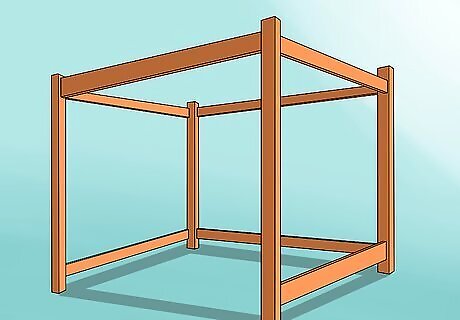
Build a Sukkah. As noted above, one of the most memorable, remarkable traditions of Sukkot is the building of a Sukkah. This lightly-constructed booth can be made from many different types of materials as long as it is able to stand up to the wind. The roof of the Sukkah is traditionally made from leaves, branches, and other plant matter. Sukkah are usually decorated on the inside with drawings and religious symbols. For more information on building a Sukkah, see the appropriate section below. In the book of Leviticus, Jews are instructed to dwell in the Sukkah for all seven days of the Sukkot holiday. In a modern context, most take this to mean centering family gatherings around the sukkah and eating meals inside it, though some devout Jews will even sleep in it.

Avoid work for the first two days of Sukkot. Though the Sukkot holiday lasts for about 7 to 8 days, the first two days of the holiday are especially blessed. On these days, much like on Shabbat, most forms of work are to be avoided as a show of reverence to God. Specifically, all activities normally forbidden on Shabbat are also forbidden on the first two days of Sukkot with the exception of cooking, baking, transferring fire, and carrying things around. During this time, people observing the holiday are encouraged to spend time praying and celebrating with their families. The following five days are Chol Hamoed (Hebrew: "intermediate days"), during which work is permitted. Note, however, that if Shabbat falls during the intermediate days, it must be observed as normal. Many common activities, like writing, sewing, cooking, braiding hair, and even watering plants are traditionally forbidden on Shabbat. Complete lists of banned activities are available from Jewish resources online.

Say Hallel prayers every day of Sukkot. During Sukkot, the ordinary morning, evening and afternoon prayers are supplemented with additional ones to mark the holiday. The exact prayers you'll need to say will vary depending on what day it is — the first two special days and the following five intermediate days have their own prayers. However, traditionally, on every day of Sukkot after the morning prayer, the complete Hallel (Hebrew: "praise") prayer. This prayer is the verbatim text of Psalms 113-118. On the first two days of Sukkot, the ordinary Amidah (Hebrew: "the standing prayer") is replaced with a special variation used just for holidays. On the following five intermediate days, the Amidah prayers are said as normal, except that a special "ya'aleh v'yavo" passage is inserted into each.
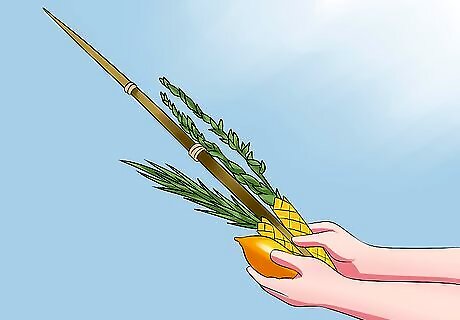
Wave the lulav and etrog. Besides building and dwelling in a Sukkah, this is the most important holiday tradition for Sukkot. On the first day of Sukkot, the observers of the holiday ritually wave a collection of branches, including the lulav and the etrog in all directions. A lulav is a bouquet made from a single palm leaf, two willow branches and three myrtle branches, held together by woven leaves. An etrog is a citron, a lemon-like fruit grown in Israel. The etrog must have the stigma stem to make it kosher. To perform the ritual, hold the lulav in your right hand and the etrog in your left, say a Bracha blessing over them, then shake them in the six directions: north, south, east, west, up, and down, symbolizing God's presence everywhere. Note that different religious commentators give different instructions for the order of directions the lulav and etrog should be shaken in. To most, the precise order isn't important.

Enjoy plenty of other Sukkot traditions. Building the Sukkah and performing the branch-waving ritual are undoubtedly the two most important, well-known Sukkot traditions, but they're far from the only ones. Sukkot is a holiday with many traditions - too many to list here. These often vary from family to family and locale to locale, so feel free to research the Sukkot traditions of the world as you're planning your holiday. Below are just a few ideas you might want to consider for your Sukkot celebration: Spend time eating meals and camping out in the Sukkah. Tell stories from scripture, especially those from the 40 years the Israelites spent in the desert. Participate in Sukkah song and dance - many religious songs are made just for Sukkot. Invite your family to join your Sukkot celebration.
Building a Sukkah
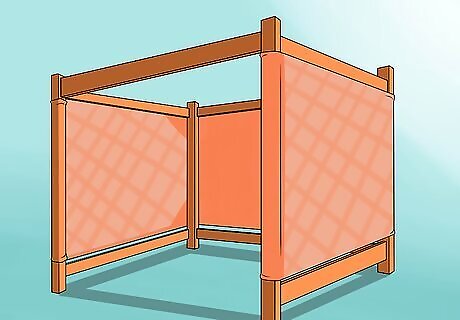
Use walls that can stand up to the wind. The sukkah, which is the definitive Sukkot tradition, is quite simple to build. The four-sided booth must have at least three walls, while the fourth wall can be used as a door. One of the walls can be low or removable to allow passage into and out of the Sukkah. The material used to build the sukkah can vary, but because the Sukkah will only remain standing for seven days, a light material probably makes most sense. The only traditional requirements for the walls are that they be able to stand up in the wind. With this definition, even canvas stretched across a hard frame is suitable. In terms of size, you'll want your walls at least far enough apart that you'll have room to eat in the Sukkah. Depending on the size of your family, this can cause the size of your sukkah to vary greatly.
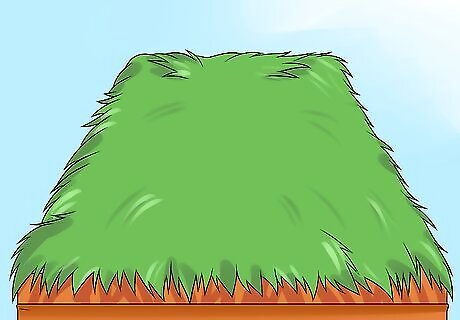
Add a roof made from plant matter. Traditionally, the roofs of sukkah are made from plant matter, like branches, leaves, twigs, and so on. These materials can be purchased or taken from nature. According to tradition, the roof of a sukkah should be thick enough to provide shade and shelter during the day, but you should still be able to see stars through it at night. Making a roof from plant material is a way of giving remembrance to the Israelites who wandered in the desert for 40 years after leaving Egypt. During their travels, they had to live in temporary dwellings similar to the sukkah, using whatever materials were available to them for shelter.
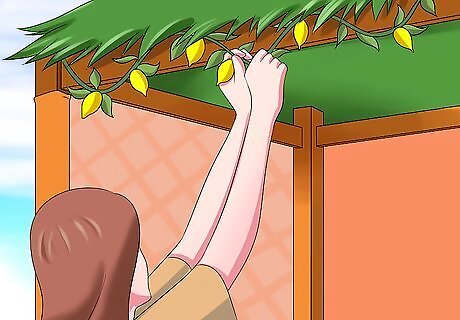
Decorate your sukkah. Decorating the sukkah is seen as a commendable show of Sukkot observance. Traditional decorations include harvest vegetables: Corn, pumpkins, and squash hung from the ceiling and beams or placed in corners. Other decorations include but are not limited to: paper chains, pipecleaner constructions, religious pictures or drawings, wax paper stained glass, or anything else that you or your children feel like creating. Children usually love to help decorate the sukkah. Giving your children a chance to draw on the walls of the sukkah and gather vegetables for display is a great way to get them involved in the holiday from an early age.

Alternatively, buy a ready-made sukkah from The Sukkot Project at www.sukkot.com. If you're in a rush or you don't have the materials necessary to buy your sukkah, don't worry! These kits allow you to set up your own sukkah without having to prepare any of the materials yourself, saving you lots of time. As an added bonus, these kits can usually be easily disassembled for use next year. Sukkah kits usually aren't terribly expensive. Depending on the size of the finished sukkah and the materials it's made out of, a kit will usually cost anywhere from about $50.00-$120.00.

Leave your sukkah up until the end of Simchat Torah. The sukkah traditionally stays up throughout the Sukkot holiday, serving as a place to gather, eat, and pray for all seven days. Immediately after Sukkot 2 holy days, Shemini Atzeret and Simchat Torah. Though they're not part of the Sukkot holiday, they are closely associated with it, so the sukkah isn't traditionally disassembled until after Simchat Torah. It's perfectly acceptable to save your disassembled Sukkah materials so that you can use them to build another sukkah next year.
Getting Meaning from Sukkot

Read the Torah to find the sources of Sukkot traditions. Though Sukkot has its origins as an ancient agricultural harvest festival, the modern religious version of the festival is derived from the Hebrew scriptures. According to the Torah, God spoke to Moses while he was leading the Israelites through the desert and instructed him on the proper traditions of the Sukkot holiday. Reading this original account of the source of Sukkot traditions can help imbue the holiday with divine meaning, especially for someone who's a new practitioner. Most of the scriptural description of Sukkot comes in the book of Leviticus. Specifically, Leviticus 23:33-43 offer an account of the meeting between God and Moses during which the Sukkot holiday is discussed.

Attend Sukkot services at your synagogue. Sukkot is most famously associated with traditions like the construction of a sukkah that take place with one's family. However, entire Jewish communities are also encouraged to come together in celebration of Sukkot at synagogue services. At traditional morning Sukkot services, the congregation joins in Amidah prayer, followed by Hallel as would normally occur for Sukkot. After this, the congregation recites special Hoshana Rabbah psalms asking for God's forgiveness. Scriptural readings during Sukkot traditionally come from the book of Ecclesiastes.

Talk to your rabbi about celebrating Sukkot. If you have questions about Sukkot or any of the traditions associated with it, try talking to your rabbi. He or she will be more than happy to discuss the religious and cultural sources of Sukkot tradition and instruct you in proper observance of the holiday. Keep in mind that Sukkot traditions can vary from community to community. For instance, among non-observant Jews, it's not uncommon for someone to not even know yow to celebrate Sukkot, while, for traditional or highly Orthodox Jews, the holiday can be a major yearly event.

Read contemporary Sukkot commentary. Not everything that's ever been written about Sukkot comes from ancient scripture or religious texts. Much has been written about Sukkot over the years by rabbis, religious scholars, and even laypeople. Many essays and opinion pieces centered on Sukkot have even been produced in the modern era. Most modern Sukkot commentary will be relatively easy-to-read and approachable compared to older writings, so feel free to look up Sukkot Essays at www.chabad.org. The subjects of modern Sukkot writings are highly diverse. Some offer new perspectives on the meanings of old traditions, others relate the meaningful personal experiences of the authors, and still others give firsthand instructions for making the best of the holiday.



















Comments
0 comment